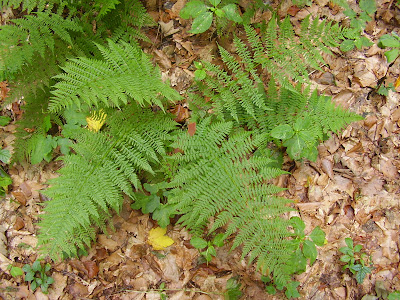Along a stream, dewdrops on a delicate horsetail (
Equisetum sp.) capture sunlight, scattering it into a miniature forest buzzing with insect life, amongst which is the common yet striking
Pyrrhocoris apterus (Linnaeus, 1758). This heteropteran frequently shows aggregating behaviour and is found large populations, here photographed on the bark of the Czech national tree
Tilia cordata Mill.
 |
| Equisetum sp., Liberec, Czech Republic |
|
|
 |
| Pyrrhocoris apterus (L., 1758) on Tilia cordata Mill. |
The periphery of the forest is characterized by a colourful scatter of berry clusters belonging to rowan (
Sorbus aucuparia L.) and elder (
Sambucus nigra L.), both of which have been traditionally used for food and medicine by settlers all over Europe. Further into the forest, as shade and shelter become predominant, ferns and mosses cover most of the clearing and make use of the abundant leaf litter.
 |
| Sorbus aucuparia L. |
 |
| Sambucus nigra L. |
 |
| Ferns on the forest floor |
Conifers of the area include pines (Pinus sylvestris L.) and spruce (Picea abies (L.) H.Karst), sometimes bearing evidence of food-seeking woodpeckers on their old trunks. Angiosperms such as beech (Fagus sylvatica L.) are also common, with their deceased offering an excellent resource for several fungal specimens.
A dead specimen of the European slow-worm
Anguis fragilis Linnaeus, 1758 was a surprising find, and one of the very few vertebrates making an appearance on the day.
 |
| Anguis fragilis L., 1758 |















0 comments:
Post a Comment